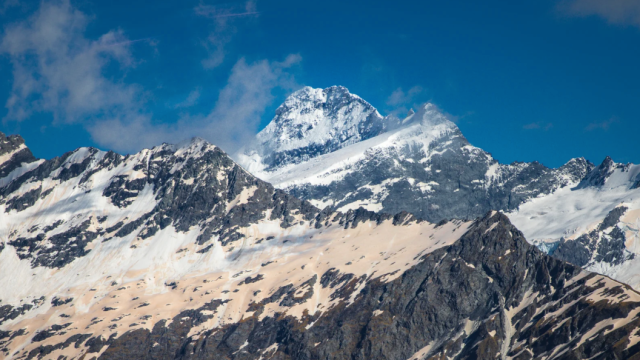For weeks now, Australia has been dealing with severe bushfires. They’ve engulfed the country’s largest city in smoke, threatening air quality throughout New South Wales and destroying key koala habitat. In New South Wales alone, more than 100 bush and grassfires were burning as of Friday.
Nearly 1.6 million hectares have burned across the country so far, unleashing massive plumes of smoke that have travelled across the ocean. The smoke has been clearly visible from space, but it’s also left a mark on the ground, painting New Zealand glaciers a shade of dusty pink.
Travel blogger and photographer Liz Carlson captured the beautiful but ominous sight during a helicopter ride in late November through Mount Aspiring National Park in New Zealand’s South Island. The park is more than 1,850 kilometres from where the fiercest fires are burning. Up close, the particles of ash look a lot more brown than pink, but these fire remnants look quite beautiful from a distance.
“As a frequent visitor to Mt. Aspiring, and flying as often as I can around these big mountains I call home, it was unusual and exciting to see something rare and different,” Carlson wrote on her blog about the glaciers. “How crazy is it that we can see the impact of fires in Australia here in New Zealand?!”
Wind-driven dust and soot created odd patterns before. Storm winds have graced parts of eastern Europe after winds picked up sand from the Sahara. Weather can be pretty cool, I guess.
What’s not cool, however, is the potential impact of ash falling on glaciers. Climate change is already melting these giant stores of ice around the world. Research has shown that dust particles from Amazon forest fires falling on glaciers in the Andes may glaciers there to melt because darkened snow absorbs more sunlight. The Greenland ice sheet has also seen widespread melting due to soot and ash from fires in North America and across the Arctic.
At the same time, climate change has increased the odds of fire weather in Australia that can lead to destructive fires like the ones we’re seeing this year. The fact that ash from the fires is ending up on glaciers adds another weird way in which climate change impacts build on each other in terrible ways.
“Our glaciers don’t need any more battles as they are already truly endangered,” Carlson wrote on her blog. “It puts the impact of climate change into even more stark reality we can’t ignore.”
Wildfires will continue to burn in Australia for the foreseeable future with a “mega fire” currently ablaze north of Sydney, and the country’s Bureau of Meteorology is forecasting a warmer, drier summer than usual.
That means an increased risk of bushfires and heatwaves. Australia’s last summer became its hottest ever recorded. That’s what climate change looks like. And so, too, do these weirdly coloured glaciers.
